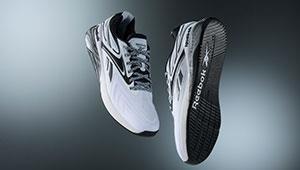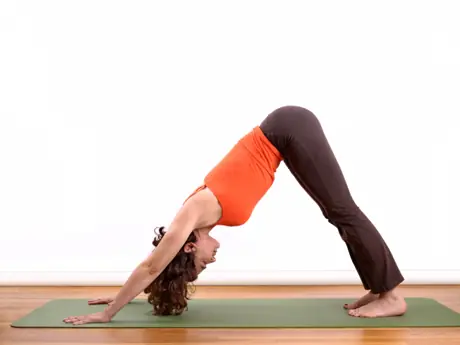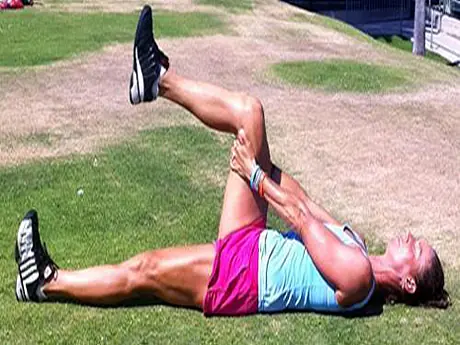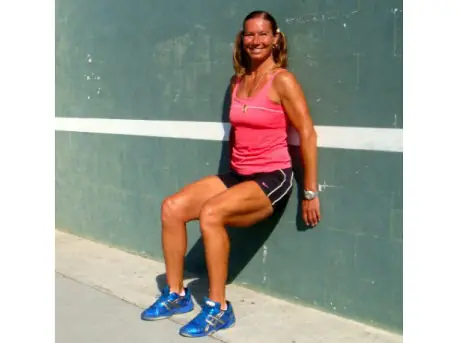You can make the circuit training session easier or more difficult by changing the duration of the exercises and the rest period.
Skipping: to work on cardiovascular, footwork & coordination
Push ups: to work chest, shoulders, arms (esp triceps - serve) and core
Place your hands underneath your shoulders with your arms fully extended, your abdominals drawn in and your fingers facing forwards.
More: The 3-Minute Stretch to Prevent Tennis Injuries
Lower your chest towards the floor by bending your arms at the elbows until your arms reach a 90 degree angle before returning to the start position. Keep your line straight by tightening your core. Don't allow your back to arch or your butt to push up.
Squats: to work quads, glutes, hamstrings, calves and core/lower back
Position your feet slightly wider then your hips with your toes slightly turned out.
Hold your hands out in front of you at shoulder height to help you keep you balanced. Slowly and under control bend your knees and lower yourself as though you were sitting down.
More: One Powerful Post-Match Stretch to Prevent Injury
Go as far as you can without lifting your heels off the floor and after a brief pause at the bottom push your weight back up to the starting position.
Crunches: to work the abdominals
Lie face up on a mat. Flex your knees and bring your heels up close to your buttocks with your feet flat on the floor. Cross you hands over your chest, draw in your abdominals and tuck you chin into your chest.
Slowly curl your upper body towards your knees in a rolling, curling motion until your shoulder blades leave the floor.
Concentrate on contracting your abdominal muscles and hold for a moment. Slowly allow your upper body to return back to the floor.
Star Jumps: to work on improving leg power, flexibility and endurance
From a squatted down position, jump up taking your hands and legs out to the side (into a star position).
More: The ABCs of Tennis Footwork
On landing, make sure you land on both feet together, lowering down back into the squat position, remembering to sit back and not allowing your knees to pass over your toes.
Bench Dips: to work triceps, chest and shoulders
Position your hands shoulder width apart on a secured bench or step. Move your feet out as far out in front of you as possible. Keep your abdominals braced and straighten out your arms, but keep a little bend in your elbows in order to always keep tension on your triceps and off your elbow joints.
More: Nick's Tips: How to Volley on the Move
Slowly lower your upper body down towards the floor and keep your elbows tucked into your sides.
Once you reach the bottom of the movement, push yourself back up to the starting position.
Lunges: to work hamstrings, glutes and quads
Begin in a standing position with your hands on your hips.
Stride forward as far as you comfortably can with one leg until that leg is at right angles. Bring that leg back to the start position and repeat with the opposite leg.
Back extension: to work lower back
Lie face down with your arms by your sides, palms facing up and legs extended and relaxed. Hold your head up slightly or rest your forehead on the floor.
Relax your shoulders into the floor and keep your abdominals drawn in. Contract the gluteals and use your lower back muscles to slowly lift your shoulders and chest off the floor. Slowly lower and repeat.
Shuttle runs (sprinting/running continuously between two or more predetermined points): to work on speed endurance.
 Search for your next tennis event.
Search for your next tennis event.
- 2
- of
- 2
About the Author
Paul Gold
Get ACTIVE on the Go


Couch to 5K®
The best way to get new runners off the couch and across the finish line of their first 5K.
Available for iOS | Android





Discuss This Article